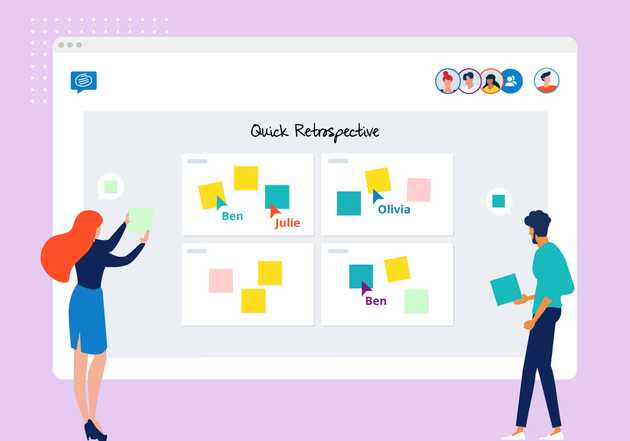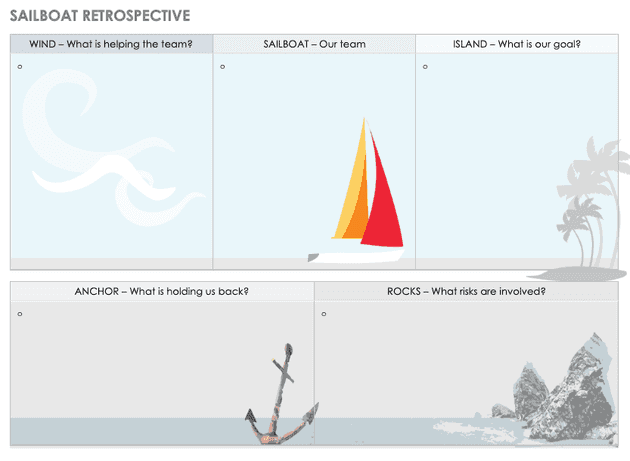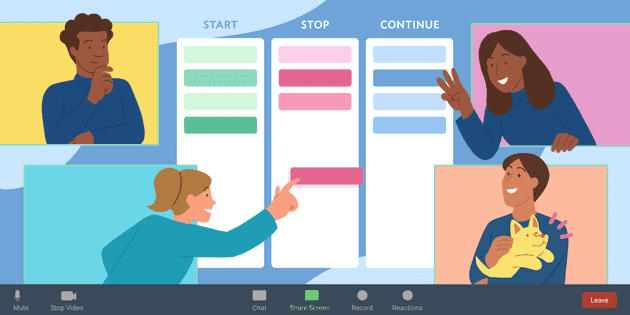Introduction:
Agile methodologies have been nothing short of a revolution in the way software development teams work, emphasizing adaptability, collaboration, and ensuring continuous improvement. One of the most powerful tools in the Agile arsenal is the retrospective—a dedicated time for teams to reflect on their work, identify areas of improvement, and enhance their effectiveness. Retrospective is the anchor on which the iterative quality of Agile rests.
Here, we will explore how to supercharge your Agile practices by harnessing the benefits of retrospectives. We will discuss effective retrospective techniques, how to facilitate constructive conversations, and the impact of Agile project management frameworks on IT projects.
1. Understanding Agile Retrospectives:
Retrospective literally means looking back, which is exactly what the team should do after the end of each iteration. These sessions of looking back and analysing what happened in the last iteration provides invaluable insights and can bring out any weaknesses in the team and process. The team will also reflect on what worked well and will brainstorm on how the team can improve in the future.
Agile retrospectives serve as a crucial component of the Agile methodology, enabling teams to introspect and enhance their performance continually. By identifying and implementing process enhancements, teams ensure that they are constantly evolving and delivering higher value.
2. Agile Retrospective Techniques for Continuous Improvement:
To achieve continuous improvement, Agile teams employ various retrospective techniques. Here are a few approaches known to improve Agile team effectiveness:
a) Start, Stop, Continue: This technique encourages team members to brainstorm ideas under three categories—things to start doing, things to stop doing, and things to continue doing. It allows the team to identify practices that should be adopted, discontinued, or sustained.
b) The Five Whys: Originating from the Lean methodology, this technique involves asking "why" multiple times to dig deeper into the root causes of issues. By repeatedly questioning until the true cause is uncovered, teams can address underlying problems and prevent them from recurring.
c) The Sailboat: In this metaphorical technique, the team envisions their project as a sailboat, with the wind representing positive aspects and anchors representing obstacles. By collectively visualizing their journey and discussing how to harness the winds and lift the anchors, the team can identify areas for improvement.
There are several other techniques and approaches to retrospectives. A team should try out a few that they feel would be right for them. It is also possible to switch up the technique intermittently, also there is no harm in sticking on to one format if that proved effective to the team.
3. How to Facilitate Agile Retrospectives for Team Productivity?
A productive retrospective hinges on open and constructive conversations. Here are some tips to facilitating constructive conversations in Agile Retrospectives
a) Psychological Safety: Foster an environment where team members feel safe to express their opinions, share their experiences, and offer suggestions without fear of judgment. Encourage active listening, empathy, and respect for different perspectives.
b) Balanced Participation: Ensure that all team members have an equal opportunity to contribute during retrospectives. Encourage quieter individuals to share their thoughts, while respectfully managing dominant personalities to avoid overshadowing others.
c) Focus on Solutions: Shift the focus of discussions from blame or dwelling on problems to identifying actionable solutions. Encourage the team to collaborate and explore innovative ideas to overcome challenges.
4. Effective Agile Retrospective Practices for Team Collaboration:
Retrospectives not only improve individual team members but also foster collaboration and team synergy. Here are some practices to enhance collaboration during retrospectives:
a) Visualize the Process: Use visual aids, such as Kanban boards or flowcharts, to map out the team's workflow. This helps in visualizing bottlenecks, identifying areas for improvement, and encouraging collaborative problem-solving.
b) Rotate the Facilitator Role: Assign a different team member as the facilitator for each retrospective session. This practice promotes shared responsibility and ensures diverse perspectives in driving the conversation.
c) Celebrate Successes: While retrospectives primarily focus on improvement, it's essential to acknowledge and celebrate the team's achievements. Recognizing successes enhances team morale and reinforces the importance of iterative development and continuous improvement.
5. Implementing Agile Project Management Frameworks in IT Projects:
Agile project management frameworks provide a structured approach to managing IT projects and aligning them with Agile principles.
Here are a few popular frameworks that enhance Agile practices:
a) Scrum: The Scrum framework facilitates iterative development, close collaboration, and frequent retrospectives. It promotes self-organization, regular communication, and adaptability, allowing teams to respond quickly to changing requirements.
b) Kanban: Kanban visualizes work in progress and optimizes flow by limiting work in each stage. Regular retrospectives enable teams to analyse and refine their workflow, leading to smoother project execution and enhanced productivity.
c) Lean: Lean principles emphasize the elimination of waste and continuous improvement. By conducting retrospectives to identify bottlenecks and inefficiencies, teams can optimize their processes and deliver value faster.
Conclusion:
Agile retrospectives form the backbone of continuous improvement within Agile practices and principles. By employing effective retrospective techniques, facilitating constructive conversations, encouraging team collaboration, and implementing Agile project management frameworks, teams can supercharge their Agile journey. Retrospectives empower teams to adapt, innovate, and excel, leading to enhanced productivity, better project outcomes, and increased customer satisfaction. Embrace the power of retrospectives to unlock your team's full potential in the Agile world.







